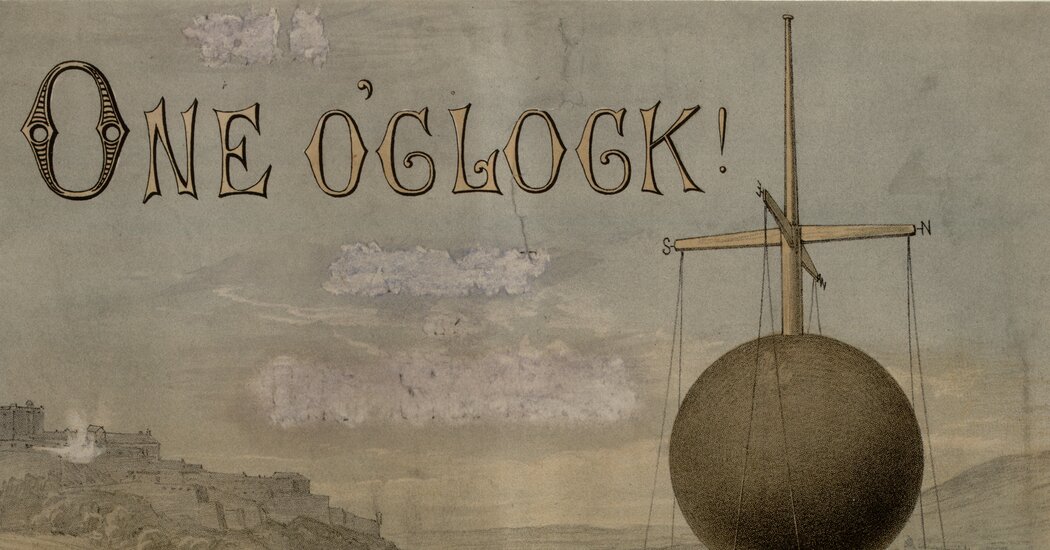
Specialists have begun the restoration of the Edinburgh Time Ball, one of the Scottish capital’s best known horological attractions, which hasn’t been operating since 2020.
A time ball is a signaling device, a sphere that drops down a pole at a predetermined time — the best known now may be the New Year’s Eve ball in Times Square and the one at the Royal Observatory in Greenwich, England. While the idea dates from the ancient Greeks, such balls were installed in the 19th century in many British ports because they could easily be seen from ships, which used the action to check the accuracy of the marine chronometers needed for navigation.
Edinburgh’s Time Ball, installed in 1853 atop the Nelson Monument on Calton Hill, had to be manually wound each day. But the practice was suspended during the city’s first Covid lockdown. Later, concerns about dampness in some of the monument’s stonework and the condition of the ball’s mast led the city to restrict access to the site.
Recently the City Council designated 430,000 pounds ($538,515) to restore both the monument and the ball.
Dismantling the ball was a big job, said Keith Scobie-Youngs, the managing director of the Cumbria Clock Company, which is doing the repairs. Removing it from the 105-foot monument early this month required a crane and scaffolding, then it was taken to his workshop in Cumbria, England, about 125 miles south.
“The entire mast is rotten and will have to be reconstructed,” Mr. Scobie-Youngs said. “The old one was made of pine but we plan to make the new one from a more suitable hardwood — and I expect it will outlast me!” He added that the new mast would be about 20 feet tall.
As for the ball itself, “it’s made from ribs of pitch pine,” he said, “and then a thin sheet of zinc would have been stretched over the top of that and nailed to the wood to make a ball.”
The sphere is six feet (1.82 meters) in diameter and, even though it is hollow, it weighs about 460 pounds (209 kilograms).
Some of that weight, he said, was a layer of fiberglass, which had discolored over time. “I think the fiberglass was a poor repair in the past,” he said. “At the moment, it’s gray.”
The project is intended to return the ball to its original appearance, except it will be painted red. “Originally, time balls were black,” Mr. Scobie-Youngs said, “but nowadays people seem to favor painting them red.”
And the mechanism, which operates with a large rack-and-pinion gearing system, will be electrified. “The mechanism used to be wound by hand every day and released every day at exactly 1 o’clock,” Mr. Scobie-Youngs said. “We’re going to make that automatic.”
He said that he expected the restoration to take as long as a year to complete.






